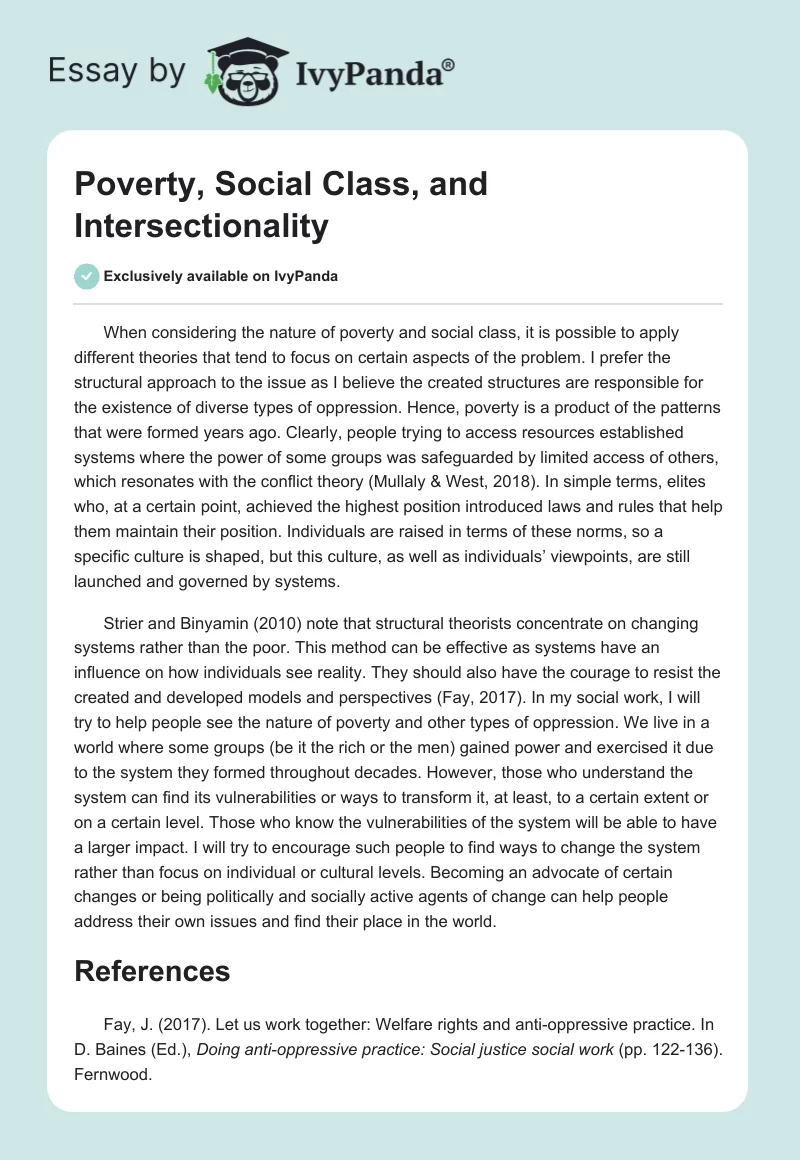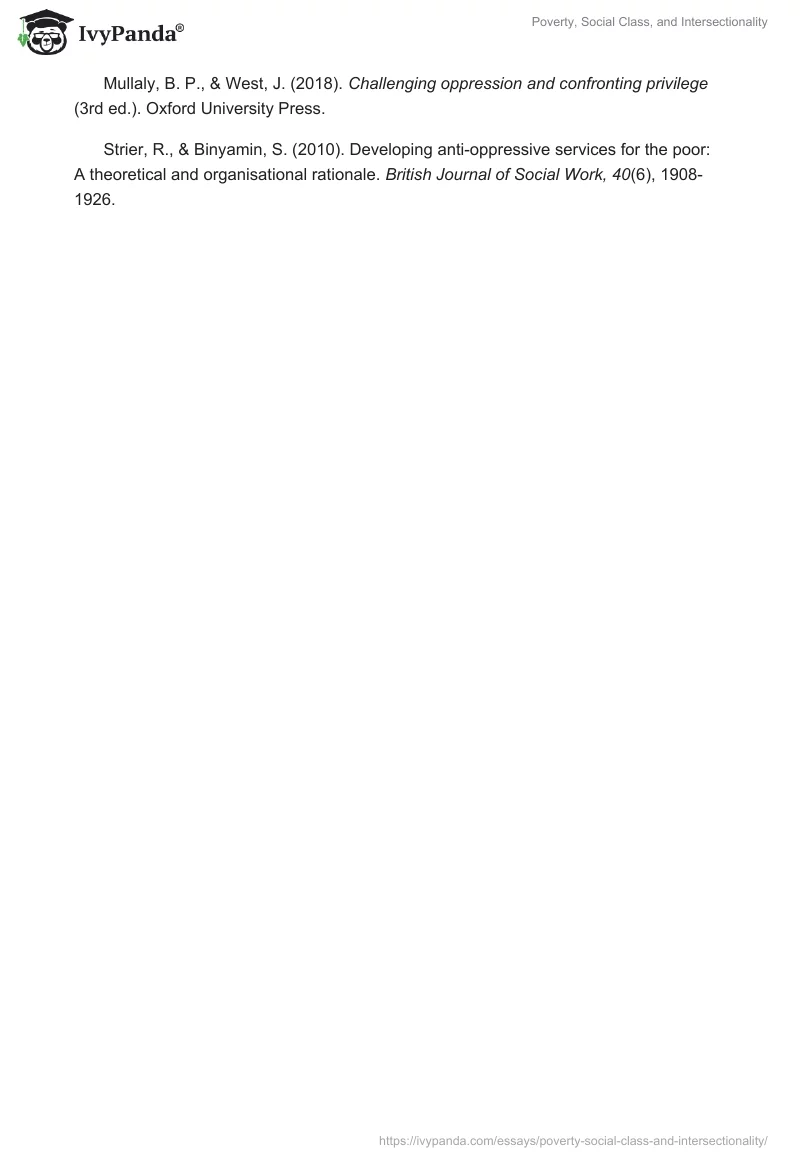When considering the nature of poverty and social class, it is possible to apply different theories that tend to focus on certain aspects of the problem. I prefer the structural approach to the issue as I believe the created structures are responsible for the existence of diverse types of oppression. Hence, poverty is a product of the patterns that were formed years ago. Clearly, people trying to access resources established systems where the power of some groups was safeguarded by limited access of others, which resonates with the conflict theory (Mullaly & West, 2018). In simple terms, elites who, at a certain point, achieved the highest position introduced laws and rules that help them maintain their position. Individuals are raised in terms of these norms, so a specific culture is shaped, but this culture, as well as individuals’ viewpoints, are still launched and governed by systems.
Strier and Binyamin (2010) note that structural theorists concentrate on changing systems rather than the poor. This method can be effective as systems have an influence on how individuals see reality. They should also have the courage to resist the created and developed models and perspectives (Fay, 2017). In my social work, I will try to help people see the nature of poverty and other types of oppression. We live in a world where some groups (be it the rich or the men) gained power and exercised it due to the system they formed throughout decades. However, those who understand the system can find its vulnerabilities or ways to transform it, at least, to a certain extent or on a certain level. Those who know the vulnerabilities of the system will be able to have a larger impact. I will try to encourage such people to find ways to change the system rather than focus on individual or cultural levels. Becoming an advocate of certain changes or being politically and socially active agents of change can help people address their own issues and find their place in the world.
References
Fay, J. (2017). Let us work together: Welfare rights and anti-oppressive practice. In D. Baines (Ed.), Doing anti-oppressive practice: Social justice social work (pp. 122-136). Fernwood.
Mullaly, B. P., & West, J. (2018). Challenging oppression and confronting privilege (3rd ed.). Oxford University Press.
Strier, R., & Binyamin, S. (2010). Developing anti-oppressive services for the poor: A theoretical and organisational rationale. British Journal of Social Work, 40(6), 1908-1926.


